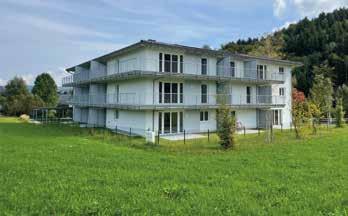Special
Automation in the parquet industry
JAN PEETERS (CSP): ‘EFFICIENT PACKING MEANS MORE THAN JUST BUYING A PACKAGING MACHINE.’
Photo CSP Engineering
What’s the best way of packing your products in the parquet industry? We put this question to some market players and in CSP we found the top specialist to explain to us how it all works. Manager Jan Peeters explains how everything revolves around working together with the client to look for the best solution and deciding together which packaging is the most suitable. According to Mr Peeters, your basic principle has to be that efficient packing means more than just buying a packaging machine. On the contrary, you have to follow a certain plan so that in consultation with the client you arrive at the most suitable packaging line for your client.
Type of products and market ‘In a consultation with a client it’s best to start by considering the client’s type of products and market. You have to know that because it compels you to opt for certain forms of packing,’ Mr Peeters explains. ‘Transport, too, can be a parameter. Suppose you have a parquet manufacturer with limited capacity which has a showroom and a few teams of fitters. In this case the most important consideration for this company is being able to deliver the finished floorboards to the end client easily and without damaging them.’ ‘In this example, strapping will usually suffice, so our other solutions from applying shrink film and including packing with cardboard ribbon are not necessary. However, if you hear that the team of fitters is going to store the floorboards at home first before fitting them at the end client later in the week, then you should at least consider packing the floorboards in shrink film, certainly if it are pre-finished floorboards. This shows how various packaging methods are related to both transport and the producer’s market. You see fully fledged packaging with producers who export overseas in containers. Such companies will usually apply both strapping and shrink film and wrap full pallets in plastic, with extra strong straps being applied around the pallets.’
Visit www.floor-forum.com
DIY is different to the professional market Jan Peeters then explains how the professional market and DIY market have different requirements. For instance, for DIY the manufacturer strongly recommends using pre-printed cardboard ribbon around each pack (brand positioning) and bar packs on pallets. ‘random’ lengths per pack are typical for producers in the Benelux and France. The wood is utilised to the full in the length. Floorboards are collected and packed in length groups and then stacked onto one pallet per order. The packs and pallets do not have a perfect ‘bar shape’. However, you need the latter for medium sized and big industrial producers. These firms produce in fix lengths and pack in fix lengths per pack. ‘If the production is in ‘random’ lengths, the packs consists floorboards of ‘similar’ lengths. To that end, we’ve developed the PAR-Scan packaging line controller, which measures the length of individual floorboards very precisely, registers the details in a database, and finally prints a label showing the exact content of that pack, including the wood, quality, and dimensions. If necessary, the label can display the client’s logo and/or a bar code. Since a control has measured the pack, it knows the geometry of the pack and can position each pack ready to be strapped. If you look at such a pack, you notice that the strapping positions are determined by the length of the upper strip, where the upper strip is often somewhat shorter than the lower one. It can apply several straps, if necessary in combination with other forms of packaging such as cardboard ribbon and shrink film. For that matter, PAR-Scan can do a lot. Does the client want to get the average length per pack? Or a list with details of the packs per order? That’s perfectly possible and eliminates discussions between sender and recipient.’
‘Fix length packs’ or ‘combination packs’ Apart from the random lengths, Jan Peeters refers to both the fix length packs and the so called ‘combination packs’. With the latter, the total length of each layer in the pack is the same (fix), but there are
Floor Forum International 119
19
















